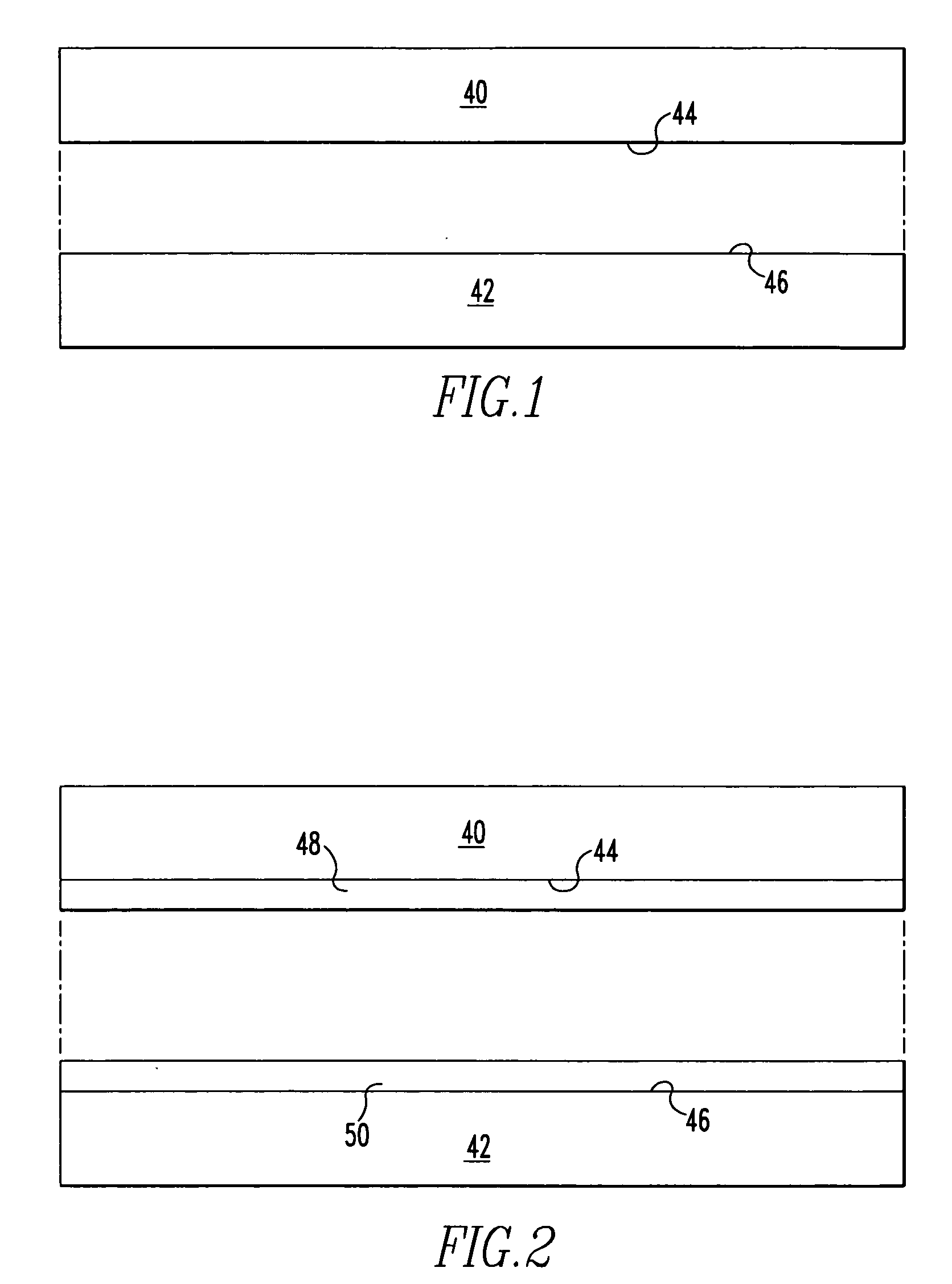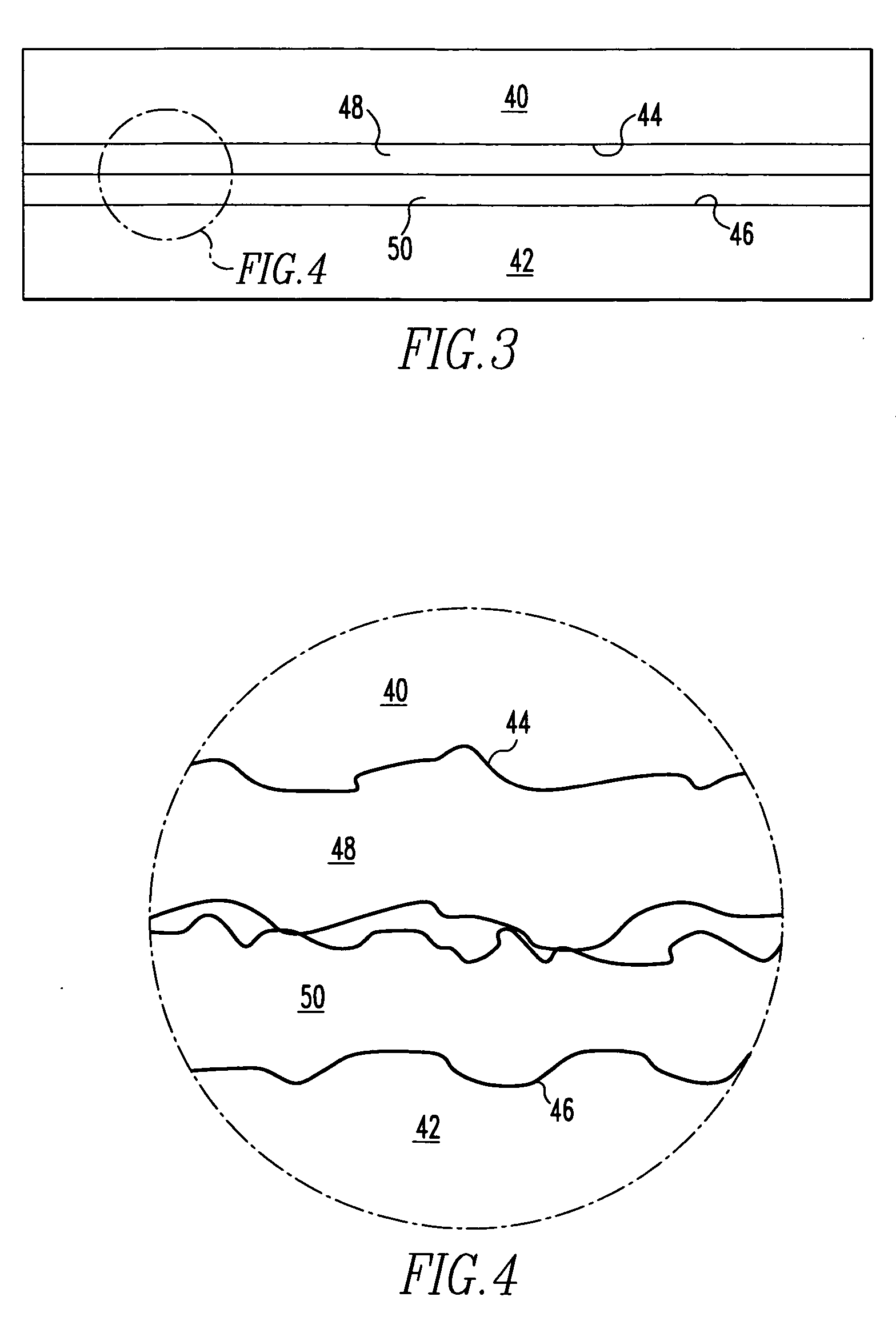Method of diffusion bonding of nickel based superalloy substrates
a superalloy and substrate technology, applied in the field of joining substrates, can solve the problems of affecting the quality of substrates, and requiring significantly more time for diffusion bonding than brazing, so as to improve the grain structure, improve the mechanical properties, and improve the effect of thinking uniformity
- Summary
- Abstract
- Description
- Claims
- Application Information
AI Technical Summary
Benefits of technology
Problems solved by technology
Method used
Image
Examples
Embodiment Construction
[0025] The present invention provides a method of joining a pair of substrates having improved surface to surface contact between the substrates and an interlayer between the substrates. The method provides for an interlayer that is applied to the joining surfaces in a manner resulting in a more uniform thickness.
[0026] Referring to FIGS. 1-7, the method of joining substrates is illustrated. The substrates 40, 42 shown in FIG. 1 may in some preferred embodiments be high nickel steel, for example, Inconel Alloy 617 or other Inconel alloys, or other similar materials. These alloys may also include solid solution strengthened alloys, or gamma prime alloys. Initially, the surfaces 44, 46 of the substrates 40, 42 will be sanded and / or polished to minimize their surface roughness. In some preferred embodiments, the average roughness (Ra) should not exceed about 30 μin., which will provide sufficient surface roughness for good adhesion of an electroless nickel plating while also providing...
PUM
| Property | Measurement | Unit |
|---|---|---|
| thickness | aaaaa | aaaaa |
| pressure | aaaaa | aaaaa |
| temperature | aaaaa | aaaaa |
Abstract
Description
Claims
Application Information
 Login to View More
Login to View More - R&D
- Intellectual Property
- Life Sciences
- Materials
- Tech Scout
- Unparalleled Data Quality
- Higher Quality Content
- 60% Fewer Hallucinations
Browse by: Latest US Patents, China's latest patents, Technical Efficacy Thesaurus, Application Domain, Technology Topic, Popular Technical Reports.
© 2025 PatSnap. All rights reserved.Legal|Privacy policy|Modern Slavery Act Transparency Statement|Sitemap|About US| Contact US: help@patsnap.com



